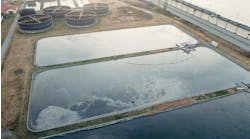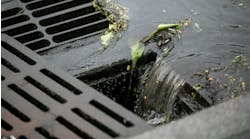In most chemical processing plants the primary objectives of wastewater treatment plants (WTPs) are to meet regulatory requirements and protect public health. Rising energy costs are placing a greater financial burden on wastewater treatment and discharge. Improving energy efficiency at WTPs could help control overall energy costs.
[pullquote]
Energy efficiency and protecting the environment are not mutually exclusive. In most plants, energy conservation programs not only reduce the amount of energy used at the facility, but also provide improved control and operation of their unit treatment processes. Hence, this column covers a few tips in controlling and sustaining energy costs in a plant’s wastewater treatment operations.
Most water/wastewater utilities need to operate, maintaining the wastewater discharge specifications, while improving their energy efficiency and managing their total energy consumption. The above goals consider both the costs associated with energy use and the plant’s reliability over time. With a better energy-management plan and adapting best practices, these goals can be balanced to avoid unanticipated costs, and still move towards improving overall energy efficiency. WTPs also can have energy benchmarks such as gallons of water treated per kilowatt-hour of electricity consumed or kwh/mgd. Some plants are able to sell their treated wastewater back to local communities for domestic use other than potable water. Some communities have separate water service for garden and farm-land irrigation from their neighborhood WTP. A petroleum refinery in southern India recycles 100% of its treated wastewater, saving substantially on its overall utility cost. In addition, due to scarce fresh water, better wastewater treatment and reuse helped the refinery to operate without straining the local authority’s water supply system.
Improving overall efficiency of water and wastewater treatment begins with simple monitoring actions such as leak detection, repairing the water distribution system, or reducing infiltration and inflow to wastewater collection systems.
Water and wastewater treatment is energy intensive mainly due to pumps and electric motors moving large volumes of water. The cost of the electricity used in the treatment process is based on two main components: the quantity of electricity used and the peak demand reached in using the electricity. Because the objective of energy cost control is to minimize the facility’s overall electricity bill, peak demand reduction is a potential energy cost control opportunity applicable to wastewater treatment. Strategies to lower peak demand include monitoring and addressing the infiltration and inflow, providing additional water storage tanks to flatten pumping demands during peak periods and shifting non-critical loads to off-peak periods, and flattening demand by minimizing the overlap between treatment processes. Considering the sequence of backwash cycles and off-peak backwash times is a common non-critical operation that also can help reduce electric demand.
Reducing the total number of kWh required to treat a given volume of water or wastewater also cuts down the electricity bill. The amount of energy used by a plant for water/wastewater treatment consists of various factors, including: treatment unit’s capacity, treatment process, type and condition of equipment, and operation and maintenance (O&M) practices. In some plants the topography of the wastewater treatment plant also could contribute to higher pumping costs.
In some wastewater treatment units several low- or no-cost opportunities may exist, such as operating only the required level of aeration tanks, installing control equipment based on dissolved oxygen monitoring, idling an aeration tank during low-flow periods, reducing air flow to the aeration tanks during low-load periods (usually nights and weekends). Regularly cleaning UV lamps is another simple O&M improvement, because lamp sleeve fouling affects equipment performance.
Closely matching pump and motor size to demand also can improve energy efficiency. Most WTPs are designed with excess pumping capacity to cater to the needs of peak demands and growth expectations. However, the actual wastewater inflows are lower, due to normal plant operational levels, and conservation efforts at the source units. Hence, if pumps are found operating far from their optimal efficiency point, their energy consumption levels would be higher. If pumps routinely operate outside of their design point for efficiency, then a new pumping solution, such as installing variable speed drives, may reduce energy costs.
In some wastewater treatment units with anaerobic digesters, routing the digester gas to the hot water boilers or using the digester gas to generate electricity using a microturbine can help reduce energy costs. Some microturbines can run on digester gas or bio-gas from WTPs. It’s also worthwhile to assess the feasibility of implementing fine bubble aeration at activated sludge treatment facilities, as well as considering super-critical oxidation of wastewater sludge.



